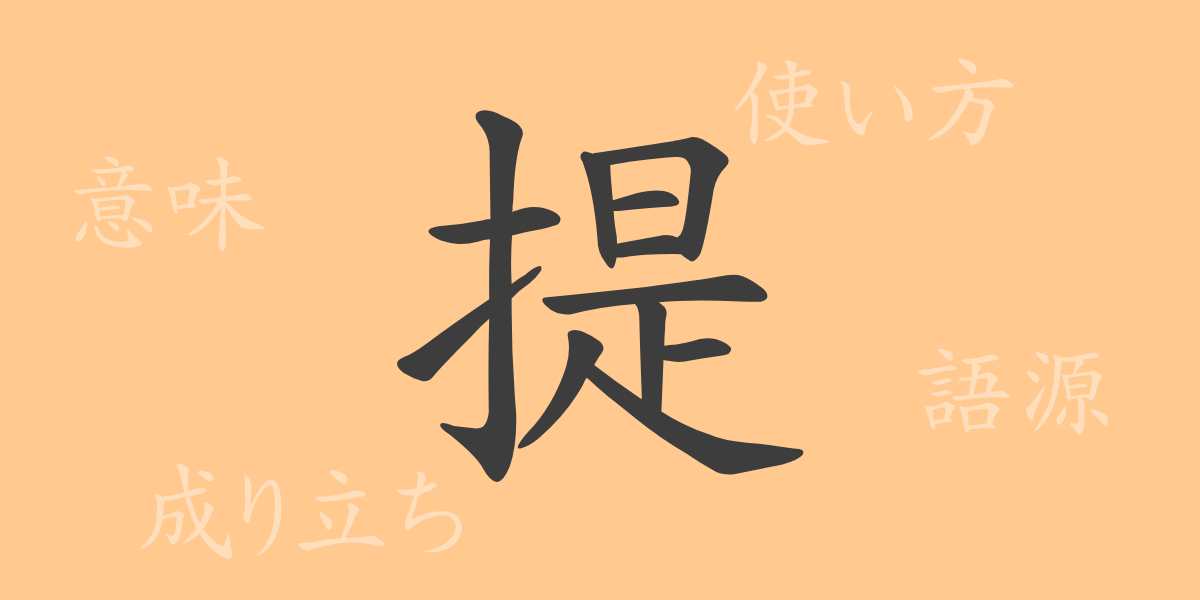Japanese kanji, each imbued with unique meanings and sounds, form the bedrock of the language’s expressive capability. One such kanji, ‘提(テイ)’, commonly used yet seldom explored in depth, is the focus of this article. We will delve into the origins, meanings, and applications of ‘提’, uncovering the rich narratives hidden within this character and enhancing our understanding of Japanese expression.
Origins of ‘提(テイ)’
The kanji ‘提’ originated in ancient China, evolving from a pictograph representing the act of lifting with the hand. Initially, this character depicted the action of ‘lifting water from a river’, embodying the notion of scooping or lifting. Over time, ‘提’ has undergone various transformations, leading to its current form, which broadly conveys the concept of lifting or bringing something up.
Meaning and Usage of ‘提(テイ)’
‘提’ encompasses meanings such as ‘lift’, ‘raise’, and ‘propose’. It is often used to denote the act of escorting someone or leading the way. Common applications include ‘提出する(submit)’, ‘提供する(offer)’, and ‘提案する(propose)’, indicating the action of presenting something to others.
Readings, Stroke Count, and Radical of ‘提(テイ)’
The kanji ‘提’ has multiple readings and a distinctive composition:
- Readings: The on’yomi is ‘テイ’, and the kun’yomi includes ‘さ.げる’, ‘さ.げ’, ‘さしだ.す’.
- Stroke Count: ‘提’ consists of 12 strokes.
- Radical: The radical is ‘扌’ (てへん), which relates to the hand, indicating actions or concepts involving the hand.
Phrases, Idioms, and Proverbs Using ‘提(テイ)’
‘提’ appears in various phrases and idioms that reflect its semantic range:
- 提案(ていあん): To suggest a new idea.
- 提供(ていきょう): To provide something needed.
- 提出(ていしゅつ): To submit necessary documents or items.
- 提灯持ち(ちょうちんもち): A metaphor for someone who always agrees with others.
- 提げる(さげる): To carry something by hand below one’s arm.
These phrases and idioms demonstrate the wide range of applications for ‘提’ in everyday conversation and business contexts, highlighting its extensive utility even within a single character.
Conclusion on ‘提(テイ)’
The kanji ‘提’ is a versatile character used extensively from ancient times to the present, evolving from its basic meaning of physically lifting to encompass actions like proposing and providing. The role of ‘提’ in various compounds and idiomatic expressions underlines its significant place in Japanese language. Through this article, we hope you have gained insights into the depth of ‘提’ and its applications, enriching your appreciation and mastery of Japanese expression.

























